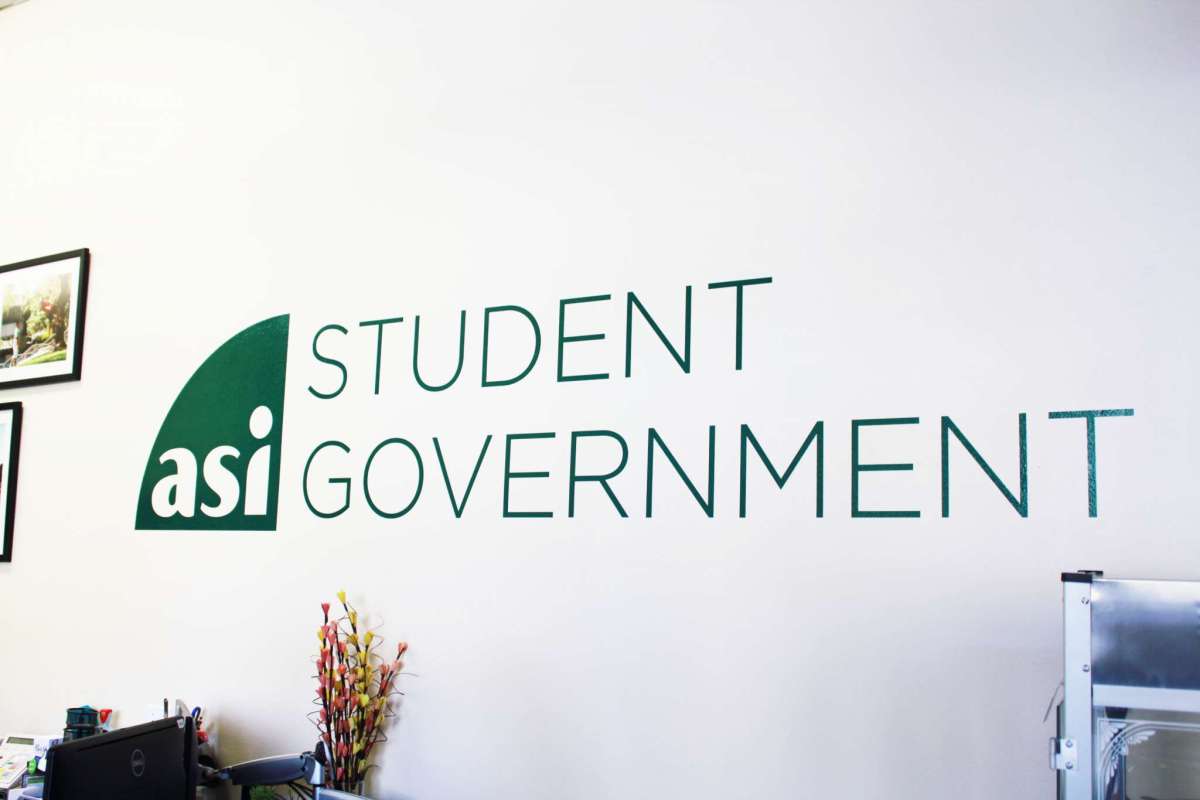Cal Poly’s Associated Students, Inc. student government leaders recently shared their priorities and goals for the 2021-22 school year, which emphasized interacting directly with the student body and listening to students.
ASI student government is split into three branches — the Board of Directors, the University Union Advisory Board and the Executive Cabinet. Each branch has one main priority this year.
Board of Directors
The ASI Board of Directors acts like the legislative branch of the United States government by proposing resolutions and bills related to issues important to the Cal Poly community.
The Board’s basic priority this year is a bylaw revision, which focuses on updating and standardizing the regulations outlined in the Cal Poly ASI Bylaws document. Proposed regulation standardizing includes wanting to update the document to include specific liaison positions between ASI committees or evaluate ASI government positions to ensure that certain students aren’t being given too much work.
“[The bylaws] are usually up for revision every five years but that revision hasn’t happened in 10-plus years. In the last couple years there have been a lot of changes in the bylaws because every year bills get passed, making amendments to the bylaws,” ASI Board of Directors Chair and civil engineering major junior Suha Hussain said. “No one has gone through and done a full revision to make sure everything is consistent across different sections.”
Hussain also said that, as part of the revisions, they are considering restructuring the way ASI student representatives are chosen. Instead of the six Cal Poly colleges electing students, students may elect representatives based on different ideas, cultural groups or affinity groups.
“We have a hard time retaining student government members and students of color because they feel there are too many barriers for them to successfully advocate in their [ASI] roles,” Hussain said. “We want to make [ASI] more accessible and more catered towards students who are trying to make change.”
University Union Advisory Board
The UUAB branch handles ASI’s finances and manages all facilities on campus, such as the Recreation Center and University Union. Phase one of their priority, an “accessibility assessment,” was started last year and will continue as a method to see what barriers prevent students from using ASI facilities and what solutions they can create.
“One idea that has come out of [the assessment] is having QR codes around the Rec Center so people can follow guided workouts so people can use equipment independently and … not feel intimidated to come into the gym,” Hussain said. “That way of accessibility is a more mental and personal sense of accessibility.”
A goal shared across boards is to make the campus more physically accessible. In addition to the UUAB’s work, Executive Cabinet Accessibility Secretary Regina Hockert said she’s working closely with the Disability Resource Center to improve their tram service.
“There are issues with the stops not having benches for people to sit on, and not having enough drivers or funding, and so I’m trying to get behind that so students can get where they need to go on time,” Hockert said.
Executive Cabinet
The Executive Cabinet, which consists of a president, chief of staff and nine secretaries, is implementing the final priority: a campus-wide assessment, according to ASI Chief of Staff Cade Creason.
“The entire goal of this [assessment] is to understand the ways in which we are serving students and failing students, and … understanding what could be done better and what could be changed at that very structural level,” ASI President Tess Loarie said.
The assessment will be carried out in three phases: a full-student body survey launched in the winter quarter, open town hall-style listening sessions and, finally, targeted listening sessions with student organizations such as clubs, centers within student diversity and belonging and Greek life.
“We want to be in touch with the student body’s needs. We don’t want to assume what the student body needs,” Creason said. “We want to understand how we can help students best, especially transitioning from COVID back to an in-person environment on campus.”
The assessment data will be compiled into a report and published on the ASI website for all students to view.
“We are student government and … if students don’t approve of us, then we’re not doing something right,” Hussain said. “We’re trying to do some introspection and see what we can fix in [ASI].”
Loarie said she is also committed to implementing her individual priorities, which include listening to students’ voices, voter turnout and the lasting impact of this year’s ASI projects on future students. She said she feels that ASI leaders rarely follow through on their promises because once they graduate, the new leaders abandon those projects.
“Every single year leadership will choose to focus on different initiatives that sometimes can be very flashy or sexy and get attention, like allocating money to certain areas or building a new building or painting a new mural somewhere,” Loarie said. “This year we said, ‘If only 10% of students showed up to vote [in ASI elections] and said they cared enough about student government to be voting, we are doing something very wrong.’ We failed on an annual basis to provide continuity within [ASI].”
Loarie said she is committed to securing a better future for Cal Poly students.
“I’m not going to give you five million new ideas,” she said. “We are going to take a year to listen [to students]. It may be that there won’t be as many concerts for you to go to or there aren’t as many booths handing out free food, [but] we’re trading those short-term instant gratification moments of advocacy for that long-term change and effort that needs to be done.”

